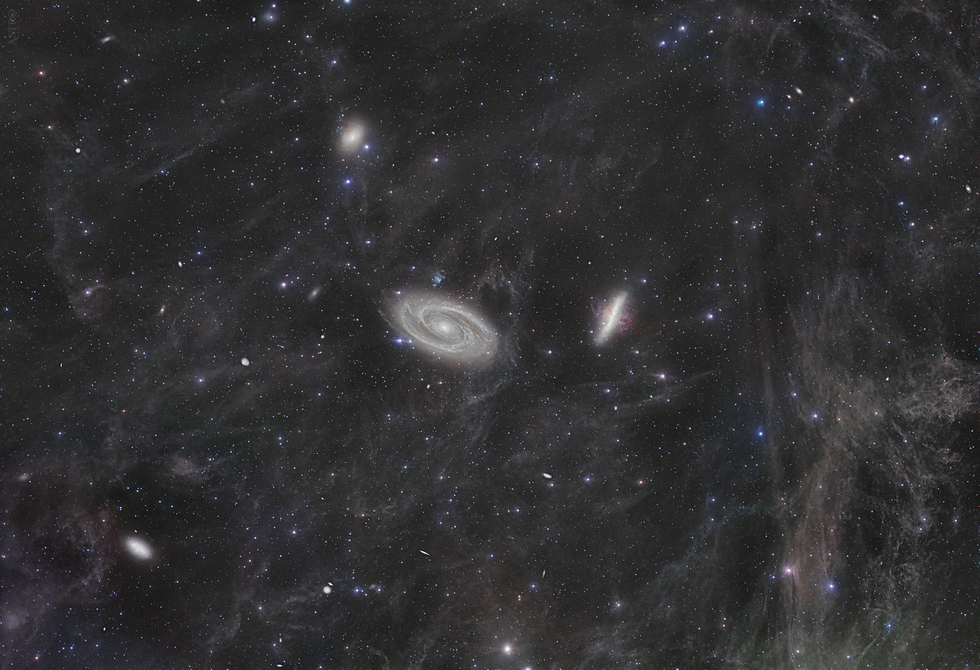Bode's Area
Bode's Area
Messier 81 (also known as NGC 3031 or Bode's Galaxy) is a grand design spiral galaxy about 12 million light-years away in the constellation Ursa Major. It has a D25 isophotal diameter of 29.44 kiloparsecs (96,000 light-years). Because of its relative proximity to the Milky Way galaxy, large size, and active galactic nucleus (which harbors a 70 million M☉ supermassive black hole), Messier 81 has been studied extensively by professional astronomers. The galaxy's large size and relatively high brightness also makes it a popular target for amateur astronomers. In late February 2022, astronomers reported that M81 may be the source of FRB 20200120E, a repeating fast radio burst.
Messier 82 (also known as NGC 3034, Cigar Galaxy or M82) is a starburst galaxy approximately 12 million light-years away in the constellation Ursa Major. It is the second-largest member of the M81 Group, with the D25 isophotal diameter of 12.52 kiloparsecs (40,800 light-years). It is about five times more luminous than the Milky Way and its central region is about one hundred times more luminous. The starburst activity is thought to have been triggered by interaction with neighboring galaxy M81. As one of the closest starburst galaxies to Earth, M82 is the prototypical example of this galaxy type. SN 2014J, a type Ia supernova, was discovered in the galaxy on 21 January 2014. In 2014, in studying M82, scientists discovered the brightest pulsar yet known, designated M82 X-2.
(Source: Wikipedia)
Messier 82 (also known as NGC 3034, Cigar Galaxy or M82) is a starburst galaxy approximately 12 million light-years away in the constellation Ursa Major. It is the second-largest member of the M81 Group, with the D25 isophotal diameter of 12.52 kiloparsecs (40,800 light-years). It is about five times more luminous than the Milky Way and its central region is about one hundred times more luminous. The starburst activity is thought to have been triggered by interaction with neighboring galaxy M81. As one of the closest starburst galaxies to Earth, M82 is the prototypical example of this galaxy type. SN 2014J, a type Ia supernova, was discovered in the galaxy on 21 January 2014. In 2014, in studying M82, scientists discovered the brightest pulsar yet known, designated M82 X-2.
(Source: Wikipedia)
SPECIFICATIONS
Telescope
Takahashi FSQ-106EDX4
Camera
QHY 600M
Location
IC Astronomy, Spain
Date of observation
February 26th - March 23th, 2023
Filters
Astrodon LRGB
Processing
Processed in PixInsight and Photoshop



